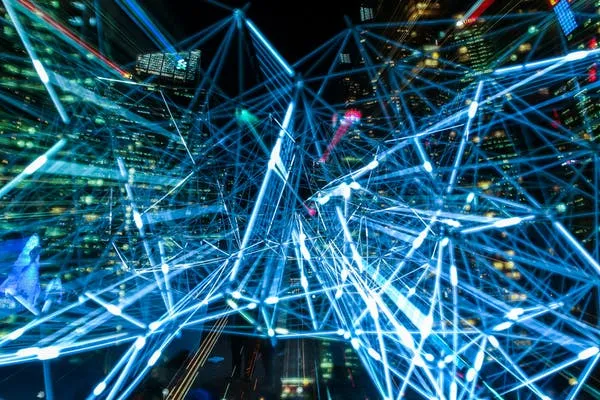
Bias in AI and ML
Bias in AI and ML is not new.
The application of artificial intelligence and machine learning in our daily lives is expanding rapidly as we move closer to a technologically driven future. The worry about bias in machine learning and artificial intelligence is increasing along with these technologies.
Bias is the unfair treatment of an individual or a group. Because technologies are not neutral and are only as good or evil as the people who create them, a lot of the bias in humans can be transmitted to robots.
Even though most biases in AI are inadvertent, their existence in machine learning systems might have negative effects. Bias in AI and ML can result in illegal activities, decreased revenue or sales, and possibly bad customer experience, which goes deeper into how machine learning systems are utilized.
Real-Time Examples of Bias in AI and ML
A group of software developers at Amazon was developing a tool to examine the resumes of job seekers in 2014. Sadly, they discovered in 2015 that the system was biased against women in technical professions. Due to these issues of prejudice and fairness, Amazon recruiters decided not to utilize the software to evaluate prospects. Legislators in San Francisco voted against the deployment of facial recognition technology in 2019 because they thought it could make mistakes when used on those with dark skin or women.
Where does Bias in AI Originate?
“We must consider all the elements that could undermine the public’s confidence in AI if we are to create trustworthy AI systems. Numerous of these variables go beyond the actual technology to the effects of the technology.”
—Reva Schwartz, head of the AI bias project
Bias in AI and ML is everywhere. It’s not just a problem for machine learning systems but also for humans who create and train these systems. And it has far-reaching effects, from the criminal justice system to healthcare to education.
Many people think that bias in AI and ML is only a concern when it comes to algorithmic decision-making. But this isn’t true. Even if the algorithm makes no decisions, bias can still creep into its data sets and training examples. The result? An AI system makes inaccurate predictions or recommendations because it was trained on biased data — even though it wasn’t necessarily programmed with explicit bias.
Creating AI Reflects Our Societal Biases
We need to be aware of the unconscious biases that influence our thinking.
The idea that artificial intelligence (AI) is inherently biased because it is built and programmed by human beings with their flaws, biases, and prejudices is gaining traction. It appears to be a natural extension of the realization that algorithms can be racist or sexist simply because they are trained using datasets containing traces of such biases. Even if the algorithm is unbiased, it can still reflect the biases inherent in its training data set.
For instance, ads on Google’s owned YouTube excluded users who had not indicated their gender.
Adverts can therefore discriminate against transgender people, intentionally or unintentionally, in violation of federal anti-discrimination laws. During that time, Google changed its advertising settings.
An example of a societal bias influencing algorithmic data bias and providing people with further opportunities to perpetuate themselves.
Bias in AI and ML Comes from Many Sources
Bias can occur throughout the machine learning project cycle, from data collection to model evaluation. The biases include:
Implicit Bias: Biases present in human decision-making processes but not necessarily conscious or intentional.
Sampling Bias: Biases are introduced by sampling from a limited population.
Temporal Bias: This refers to the fact that data can change over time
Edge Cases and Outliers: Edge cases are situations that don’t fit the model because they’re extremely unusual or extreme.
Sources of Bias in AI and ML
As a field, machine learning is growing fast. But with that growth comes the challenge of addressing bias in AI systems. There are several sources of bias in AI systems, including biased humans, insufficient training data, and unfair data.
Biased Humans
In many cases, humans have created the algorithms that make up an AI system. This means human biases can be introduced into the system during its creation. For example, when hiring people to build your AI models, you may inadvertently hire those who fit your existing culture and values.
Insufficient Training Data
Another source of bias in ML models comes from insufficient training data. If a model doesn’t have enough data to learn from, it will make decisions based on what it has been exposed to in the past.
Unfair Data
Data can also be unfair when someone intentionally mislabels it or includes irrelevant information like gender when they shouldn’t.
Conclusion
The prejudice existing in our society can easily be transmitted to algorithms. We observe how effortlessly racial and gender discrimination is practiced in machine learning. As business organizations use AI to boost productivity and performance, they must take a more proactive approach to assure justice and non-discrimination: to remove bias in Ai and ML. Including an AI ethicist on your development team could be one way to identify and address ethical concerns before devoting a lot of time and resources to a project.
References
https://www.reuters.com/article/us-amazon-com-jobs-automation-insight-idUSKCN1MK08G
https://www.nytimes.com/2019/05/14/us/facial-recognition-ban-san-francisco.html
Copyright 2025 © Technology Roles By Indigomark - All Rights Reserved.
